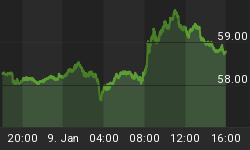"The Panic of 1907" vs. the "Debt Crisis" of 2011
If "legendary Wall Street figure" ever described anyone, it was turn-of-the-last-century financier J.P. Morgan. You can throw in "bigger than life" to boot.
Morgan was used to getting his way. His steely eyes cast a "ferocious glare." His bulbous nose added to his imposing presence.
Beyond appearance and persona, Morgan was a one-man central bank. Historians credit him with bringing calm -- and loads of liquidity -- to the "Panic of 1907."
While he "stared down" that financial crisis, even J.P. Morgan would be no match for today's national debt. In 1907, the Wall Street legend gathered New York City's biggest bankers into his office and demanded that they had 10 minutes to collectively pledge $25 million to keep the NYSE open. Morgan got his way.
At the time that was a lot of money. But let's see how far an equivalent sum (constant dollars) would go today.
I used several methods to calculate constant dollars from 1907, and the highest estimate (relative share of GDP) converts $25 million then to some $11 billion today.
Yet $11 billion doesn't even make a dent in our $16 trillion national debt.
Interestingly, the 1907 Panic eventually led to the 1913 creation of the U.S. Federal Reserve. Then as now, the central bank's function is "financial stability."
Specifically, the Federal Reserve serves as a "lender of a last resort" -- the role Morgan and his banker friends played in 1907.
Fast-forward ninety years: In 2002, Robert Prechter published Conquer the Crash (now in its second edition), and said this about the central bank:
"Congress authorized the Fed not only to create money for the government but also to 'smooth out' the economy by manipulating credit (which also happens to be a re-election tool for incumbents). Politics being what they are, this manipulation has been almost exclusively in the direction of making credit easy to obtain."
Sounds a lot like today, doesn't it?
And just a few weeks ago, Fed Chairman Ben Bernanke said he wants to keep interest rates very low:
"Issuing a grim new assessment of the American economy, a divided Federal Reserve said it now expects to hold short-term interest rates near zero for at least two more years."
Los Angeles Times, (8/10)
Since the start of the Great Recession, the Fed's easy money policy has not restored health to the economy. Why should the same policy work in the next two years?
Notice how the above quote uses the phrase "a divided Federal Reserve." With that in mind, here's what Prechter published as recently as July 16:
"...when the trend in social mood turns down again, dissension will increase. The Fed is fracturing internally..."
Elliott Wave Theorist, July 2011
The U.S. Federal Reserve was created almost a century ago. Has it kept us financially stable? What does the future look like for America's central bank?

Get your Free Report titled Understanding the Fed, and learn more about America's "lender of last resort."
This complimentary report goes way beyond the history of the U.S. Federal Reserve, and shines a bright spotlight on the central bank's machinations today. Most importantly, your free eBook helps prepare you and your family for the "economy of tomorrow." We see big changes just ahead.
Gain instant access to Understanding the Fed by simply joining Club EWI -- a membership community of over 300,000 of the independently-minded. Membership is also free. Simply follow this link for your quick and easy sign-up>>
This article was syndicated by Elliott Wave International and was originally published under the headline Those Steely-Eyes of J.P. Morgan: Could They Help Us Today?. EWI is the world's largest market forecasting firm. Its staff of full-time analysts led by Chartered Market Technician Robert Prechter provides 24-hour-a-day market analysis to institutional and private investors around the world.















